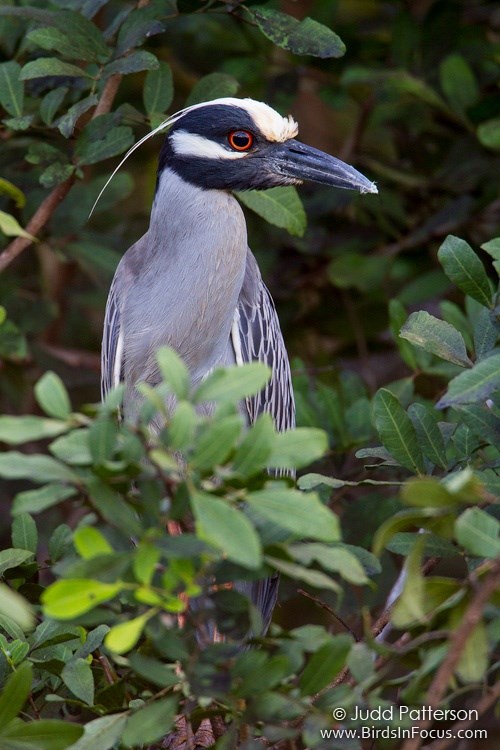
Convoy Point - the main entrance road often hosts yellow-crowned night herons, drive carefully! The visitor parking area is a great place for migratory warblers. Loggerhead shrikes and northern mockingbirds are year round residents around the visitor center. The park has one of the largest populations of mangrove cuckoos in Florida, and this difficult to find species may be observed in the visitor center area. The jetty walk may include some surprises. During low tide look carefully among the rocks at the bird sanctuary at the end of the jetty. A myriad of shorebirds, terns and double-crested cormorants may be observed, especially during winter. The islands around Mowry Canal often serve as roosts for black and turkey vultures. In mornings and evenings, hundreds of wading birds - primarily white ibis, fly overhead to and from their park island roosting sites south of here. Black Point - visitors might hear a mangrove cuckoo or see shorebirds on the jetty. Prairie warblers are commonly heard. The end of the jetty is a bird sanctuary, so please do not wander off trail. Look carefully with binoculars or spotting scopes among the rocks for shorebirds, especially in the winter. A round trip walk along the Black Point jetty takes about an hour if stopping to bird. The walk burns about 226 calories. Biscayne Bay/Black Point shoreline - wading birds like white ibis, great and little blue herons, and great and snowy egrets can all be observed in the mangroves, as can brown pelicans and double-crested cormorants. Spotted sandpipers may appear along the mangrove edge. In the sky, numerous black and turkey vultures, and all kinds of gulls can be seen, for the South Dade landfill is nearby. Jones Lagoon - please observe birds in nesting colonies from a distance of 300 feet, keep quiet and you will be rewarded with the spectacular experience of observing wading birds tending to their nests and young. The lagoon is a non-combustion engine use zone. Accessing the area is challenging and paddle craft are recommended. Elliott Key - habitats include tropical hardwood hammocks, mangrove forests and beaches. Due to its offshore location, a variety of rarities from the Caribbean sometimes arrive. Will you be next to see a Bahama mockingbird or a bananaquit? The forested areas also attract unexpected birds from the mainland including a red-headed woodpecker. Try birding along the hiking trail for red-shouldered hawks or warblers, or the oceanside boardwalk to see a beautiful line of flying brown pelicans. The marina and university dock often host shorebirds such as ruddy turnstones, least sandpipers, ring-billed and laughing gulls, and royal terns. Boca Chita Key - from the north beach, wading birds and brown pelicans may be seen on the abandoned pilings near Ragged Key #5. If you see a closed area on a grassy field, it might be a Wilson's plover nesting area. Please maintain a respectful distance and use binoculars. Biologists are concerned about a recent decline in numbers for this species. Shorebirds use the boat basin walls during high tide to rest, and royal terns are abundant. Stiltsville - the houses host an astonishing number of double-crested cormorants. In the winter, ring-billed and laughing gulls, and royal terns are often observed. Fowey Rocks Light - this historic lighthouse often hosts brown boobies as well as brown pelicans. Peregrine falcons may be observed during spring migration. Check the skies for magnificent frigatebirds soaring overhead, and scan the horizons for petrels and shearwaters. Pacific Reef Light - this reef light often hosts brown boobies as well as brown pelicans. Check the skies for magnificent frigatebirds soaring overhead, and scan the horizons for petrels and shearwaters.
|
Last updated: February 22, 2018
